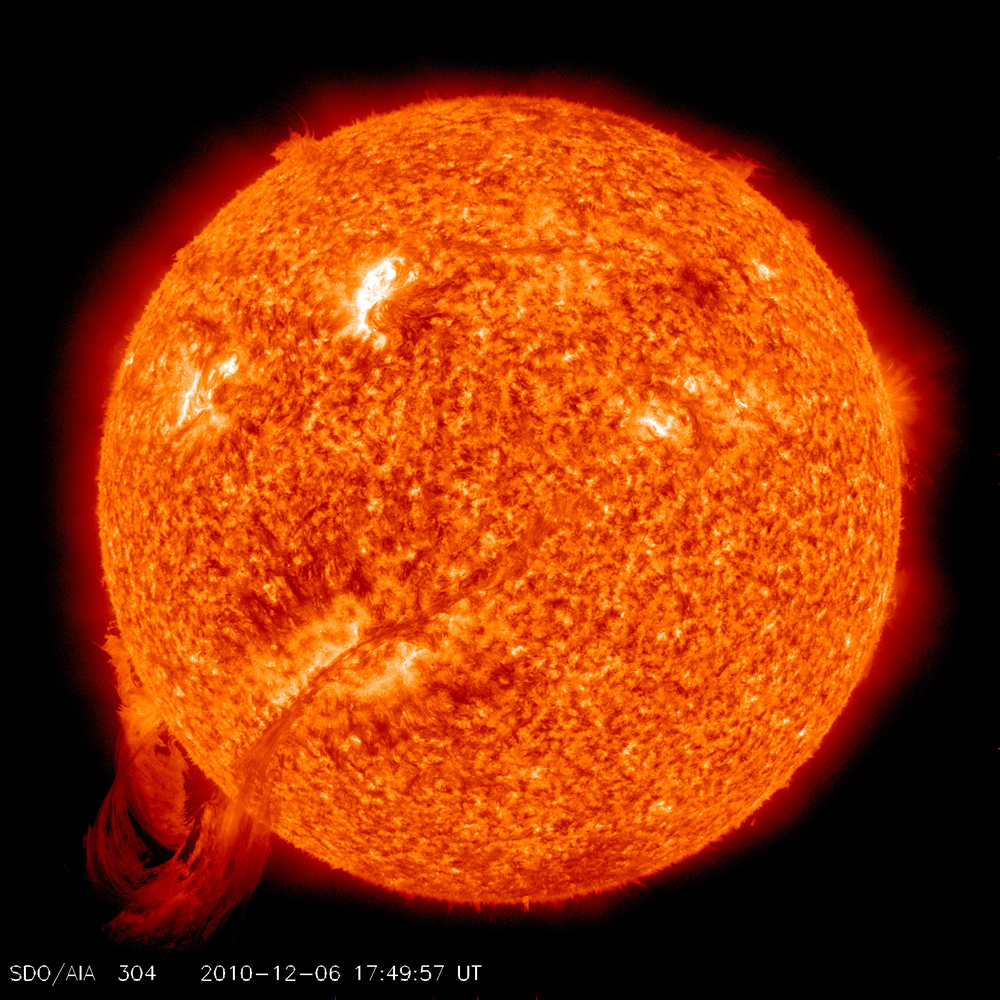Huge Solar Flare Creates Gorgeous Filament

A massive solar storm erupted from the sun today, creating a huge tendril of plasma that stretched across the face of the star.
The giant solar eruption created a long filament of magnetic plasma, which extended an astounding 435,000 miles (700,000 kilometers) – nearly twice the distance between the Earth and the moon – across the sun's southeastern region, according to the website Spaceweather.com, which monitors solar storms and sky events.
NASA's Solar Dynamics Observatory caught a stunning snapshot of the monster sun storm early this morning (Dec. 6). [Photo of the huge solar filament]
"The massive structure is an easy target for backyard telescopes (monitoring is encouraged) and it has the potential for an impressive eruption if it happens to collapse in the hours or days ahead," Spaceweather.com reported in an update. The website described the solar prominence as a "mega-filament."
Skywatchers should never look directly at the sun with their unaided eyes or through a telescope. Permanent eye damage can result. Instead, proper telescope filters or protective glasses from reputable astronomy dealers should be used for solar observations.
But amateur astronomers with the right equipment to safely observe the sun should act fast. The large solar filament won't last forever.
"So far the massive structure has hovered quietly above the stellar surface, but now it is showing signs of instability," Spaceweather.com reporter. "Long filaments like this one have been known to collapse with explosive results when they hit the stellar surface below."
Breaking space news, the latest updates on rocket launches, skywatching events and more!
The sun is in the midst of an extremely active period of its 11-year solar weather cycle after a long lull in activity.
This latest solar filament follows on the heels of a similar prominent sun eruption last month. That earlier solar filament was spotted on Nov. 16 and stretched across just over 372,800 miles (600,000 km), making it a shorter than the new filament spotted today.
The Solar Dynamics Observatory and several other spacecraft keep constant watch on the sun to track solar weather activity.

Space.com is the premier source of space exploration, innovation and astronomy news, chronicling (and celebrating) humanity's ongoing expansion across the final frontier. Originally founded in 1999, Space.com is, and always has been, the passion of writers and editors who are space fans and also trained journalists. Our current news team consists of Editor-in-Chief Tariq Malik; Editor Hanneke Weitering, Senior Space Writer Mike Wall; Senior Writer Meghan Bartels; Senior Writer Chelsea Gohd, Senior Writer Tereza Pultarova and Staff Writer Alexander Cox, focusing on e-commerce. Senior Producer Steve Spaleta oversees our space videos, with Diana Whitcroft as our Social Media Editor.
